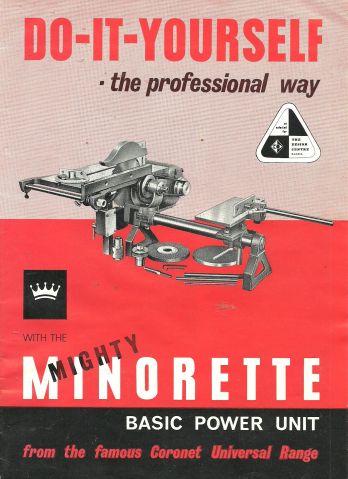Three hours of collage preparation (stage 1: removing the pages from the source).
Fella in the pub said his old man used to say an hour in the mornings worth two in the evening.
“In the run-up to the 2004 Turner Prize, the most prestigious contemporary art prize awarded in Britain, the sponsor of the award, Gordon’s Gin, polled five hundred of the most powerful people in the art world. Leading dealers, critics, artists, and curators were asked what in their opinion was the most influential work of art of the twentieth century, taken from a list of twenty nominations. When the votes were tabulated, well back in second place was Picasso’s Les Demoiselles d’Avignon, ahead of Andy Warhol’s Marilyn Diptych, Picasso’s Guernica, and Matisse’s The Red Studio in fifth place, with works by Joseph Beuys, Constantin Brancusi, Jackson Pollock, Donald Judd, and Henry Moor bringing up the rear. The winner by far, with 64 percent of the vote for number one, was an object whose very status as a work of art remains in dispute, a work that no longer exists because the artist’s sister tossed it into the trash long ago: Fountain, the men’s urinal put forward for exhibition in 1917 by Marcel Duchamp. (p193, The Art Instinct, Dennis Dutton, 2009)”
hours: unknown, but I’ve renewed this book eleven times.
Reading is research, everything is evidence.
From a conversation started through Un sou pour vos pensees (2012) came a rough quote attributed to Einstein along the lines of ‘What does a fish know of the sea.’ Which I instantly liked but thinking about it this week, there’s a big difference between the brain of a Halibut or a Haddock and the brain of a human.
“Human responses to landscapes also show atavisms, and the Komar and Melamid experiments are a fascinating, if inadvertent, demonstration of this. The lush blue landscape type that the Russian artists discovered is found across the world because it is an innate preference. This preference is not explained just by cultural traditions. Specifically, the suggestion that the pervasive power of the worldwide calendar industry might explain why even Kenyans think Hudson River School when asked about favourite pictures evades a more plausible hypothesis: that calendars – and the picture preferences they reveal in completely independent cultures – tap into innate inclinations. This fundamental attraction to certain types of landscapes is not socially constructed but is present in human nature as an inheritance from the Pleistocene, the 1.6 million years during which modern humans evolved. The calendar industry has not conspired to influence taste but rather caters to preexisting, precalendrical human preferences. The tantalising question is: why is there such a persistent preference for the blue, watery landscape?” (p18, The Art Instinct, Dennis Dutton, 2009)
For an answer read Elaine Morgan.
16 hours of art.
Performing Un sou pour vos pensees (A penny for your thoughts) in London for the first time; outside the Tate.
On the second day two Tate assistants approached me, I offered them a penny for their thoughts but they refused to accept and instead discussed the Tate/Southwark council boundary. Today I was straddling the boundary, leaning back against the pink art information sign. Yesterday I sat on the Southwark path only. They asked me to move. I asked them about the Tate – if it is publically funded and owned by the tax payers? One of them advised they couldn’t be seen to show bias, I didn’t respond but thought the nature of a gallery, by default, exhibiting some artists and not others, is bias. I tried, tested the water, to see if common sense would prevail and allow them to see my leaning on the Tate sign was no big deal and pointed out that ten minutes after they had gone I could just move back to my original position. They agreed there was nothing to stop me doing that. I didn’t but later thought I could sit on the Tate boundary side as a member of the public and leave my objet d’art laid out on the Southwark council side, the path and that would by-pass any issues. They then asked me what it was about. I politely refused to explain.

Write as if no one is reading. There is no conclusion, just hypothesis. Two days of art consumption, costing £37.10 + £10.10 in train fares. Andrea Zittel in Newcastle and Two Days at Sea in Manchester. Inspiring and confirming. Reading Pinker’s List by Elaine Morgan.
Experimentica 2012 proposal
I propose a programme of one on one monologues about an alternative, underdog theory of evolution. This alternative theory of evolution is known as The Aquatic Ape Hypothesis whose strongest advocate is the Welsh writer Elaine Morgan. My monologue references Elaine’s writing but also includes other ideas: that a diet based on seafood changed the structure of our brain; that schizophrenia played a role in our evolution; that singing came before language and that laughing is the “missing link”, an unseen action, a fossil never to be found.
I have previously presented this idea as a 15 minute lecture at the greenroom in Manchester (see http://www.youtube.com/watch?v=zmPq1wduKOs&feature=plcpand and as an experimental film http://www.youtube.com/watch?v=LWC8qdHnTcU).
I would like to perform for longer; 30 minute monologues, “nine – five”, over the five days of Experimentica 2012. The monologues have minimal technical requirements; a table and two chairs and can take place in a public space. There are no material/production costs just accommodation and food.



